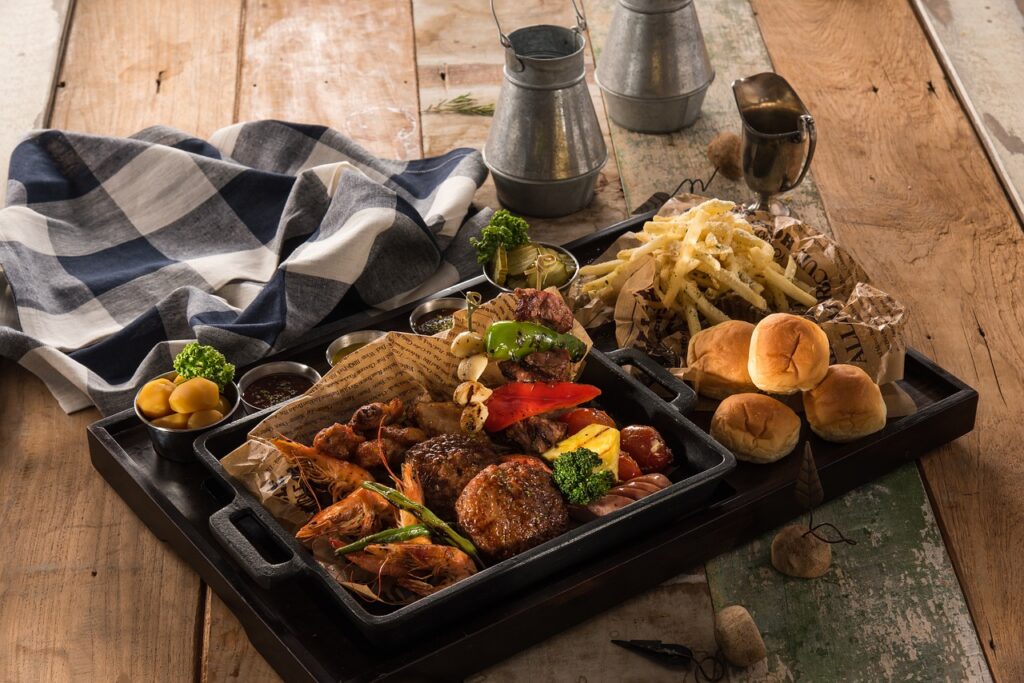Fusion Feasts: Where Indian Spices Meet Global Culinary Trends

Culinary traditions around the world have been evolving for centuries, shaped by migration, trade, and cultural exchange. One of the most fascinating culinary phenomena in recent times is the fusion of traditional Indian spices with global cuisines. The melding of Indian flavors with international culinary trends has resulted in a gastronomic explosion that delights the palate and reflects the interconnectedness of our modern world. In this article, we delve into the realm of fusion feasts, exploring how Indian spices have seamlessly integrated into diverse global dishes, creating culinary experiences that are both comforting and exciting.
The Spice Trail: A Journey Across Cultures
India’s history is rich with the story of spices. From the ancient Silk Road trade routes to the colonial era’s spice routes, Indian spices have traveled the world, leaving an indelible mark on various cuisines. The depth and complexity of Indian spice blends, such as garam masala, curry powder, and tandoori masala, have intrigued chefs worldwide. These blends, carefully crafted from a combination of aromatic spices like cardamom, cumin, coriander, and cinnamon, lend an unmistakable depth of flavor that has captivated culinary enthusiasts across the globe.

Embracing Fusion: A Culinary Adventure
The fusion food movement emerged as a natural response to our increasingly interconnected world. As travel and communication became easier, culinary boundaries blurred, leading to innovative combinations that pay homage to multiple cultures. The fusion of Indian spices with international ingredients has become a hallmark of this movement, resulting in dishes that are both familiar and novel.
Fusion in Action: Global Dishes with an Indian Twist
- Spiced-Up Tacos: The marriage of Indian spices and Mexican street food has given rise to tantalizing creations like “masala tacos.” Traditional taco fillings are infused with Indian spices, such as cumin and chili, while toppings might include tangy yogurt-based sauces reminiscent of Indian chutneys. The result is a harmonious blend of flavors that redefines the taco experience.
- Curry Pizzas: The ubiquitous pizza has embraced Indian flavors with open arms. A curry pizza might feature a tomato-based sauce infused with fragrant spices like turmeric, cumin, and fenugreek. Toppings could range from marinated paneer to spiced potatoes, creating a delightful interplay of textures and tastes.
- Sushi Samsara: Sushi rolls take a delightful detour with the infusion of Indian spices. Imagine a sushi roll with lightly curried rice, tandoori-style grilled seafood, and a hint of minty yogurt sauce. This fusion exemplifies how cultural nuances can seamlessly enhance a well-loved dish.
- Naan Burgers: The fusion of Indian bread and American burgers results in a flavor explosion. A succulent patty is served between buttery naan, with toppings like pickled onions, spiced mayo, and a side of masala fries. It’s a playful twist that bridges two culinary worlds.
- Thai-Indian Curry Fusion: Thai curries and Indian curries share common ingredients like coconut milk and spices. Combining the two creates a unique harmony of flavors—think red curry with hints of garam masala or green curry infused with fenugreek. The result is a delightful curry symphony that showcases the best of both cuisines.
Culinary Creativity and Cultural Sensitivity
While fusion cuisine is a celebration of creativity, it’s essential to approach it with cultural sensitivity. Chefs must strive to understand the origins and significance of the ingredients they are working with, ensuring that the fusion is not merely a gimmick but a respectful homage to both cuisines. When done thoughtfully, fusion dishes can serve as a bridge between cultures, fostering appreciation and understanding.
From Home Kitchens to Fine Dining: Fusion’s Versatility
The fusion of Indian spices with global cuisines isn’t limited to restaurant kitchens. Home cooks are also experimenting with incorporating traditional Indian flavors into their everyday cooking. From curried pasta to spiced grilled sandwiches, the possibilities are endless. This culinary movement’s versatility is exemplified by food trucks, pop-up restaurants, and high-end dining establishments, all of which embrace fusion to different degrees.
Challenges and Rewards of Fusion Cuisine
Creating successful fusion dishes requires a deep understanding of flavors, textures, and cultural contexts. While it can be a challenging endeavor, the rewards are often extraordinary. A well-executed fusion dish has the power to surprise and delight diners, inviting them to explore new tastes while invoking a sense of nostalgia through familiar ingredients.
Conclusion
In the realm of fusion cuisine, the marriage of Indian spices and global culinary trends is a testament to the vibrant interconnectedness of our world. It showcases the remarkable journey that flavors can undertake, transcending borders and historical divisions. From the streets of New York to the markets of Mumbai, fusion feasts bring people together through the universal language of food. As chefs and home cooks continue to explore the endless possibilities, one thing remains clear: the fusion of Indian spices with global cuisines is a celebration of cultural diversity, creativity, and the joy of discovery on a plate.








